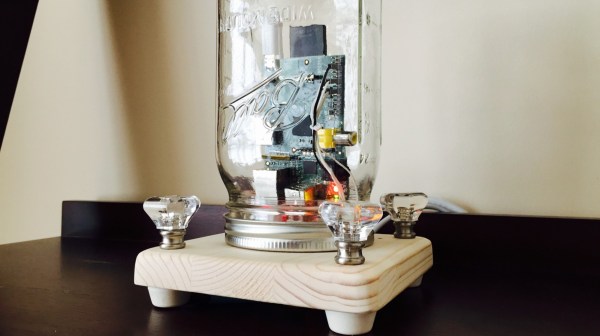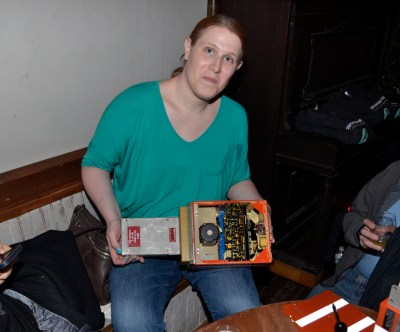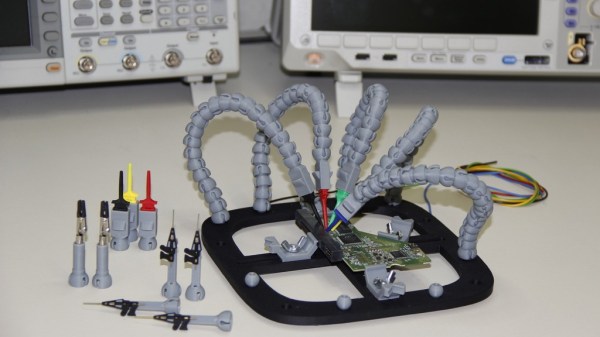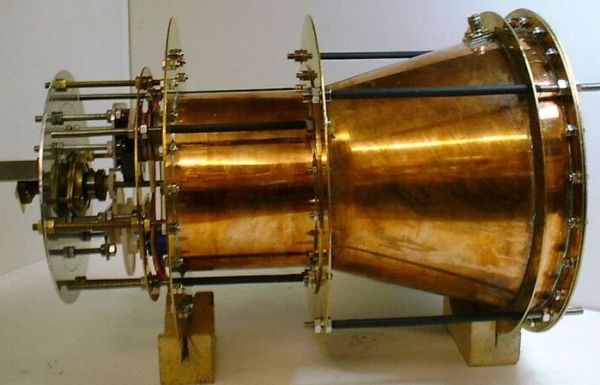[Matt Reed] used a few off-the-shelf parts and built a Raspberry-Pi based BitTorrent Sync client to help backup files. What makes it stand out is the idea of using a Mason Jar as the enclosure and the nice build finish. Mason Jars have long been used to preserve food. [Matt] wanted to use the Mason Jar to help preserve family memories.
Basically, he just stuffed a Raspberry Pi inside a jar with some LED’s and put BitTorrent Sync on it. He started off with a nice, square piece of wood and mounted the lid on it. Holes were drilled to fix the four LED’s and faux crystal drawer pull knobs. The Pi was connected to power and Ethernet and the LED’s wired up. The software is quite straightforward – just install BitTorrent Sync on the Raspberry Pi. He wrote a Node.js script to constantly check if BitTorrent Sync is transferring any data, and if it is, blink the LED’s so it looks cool. If no data is being transferred, the LED’s just glow solid red. Once it is plugged into power and connected to the internet, any photo or video (or any file for that matter) that is put inside a special folder called “Preserve” on any of his devices, gets sync’ed and copied to the “Raspberry Preserve” – preserved for posterity.




 While this meetup was really just a meet-and-greet pregame for the TechCrunch hackathon, and not a proper ‘bring a hack’, that didn’t stop a few people from toting out some very cool hardware. [
While this meetup was really just a meet-and-greet pregame for the TechCrunch hackathon, and not a proper ‘bring a hack’, that didn’t stop a few people from toting out some very cool hardware. [

















